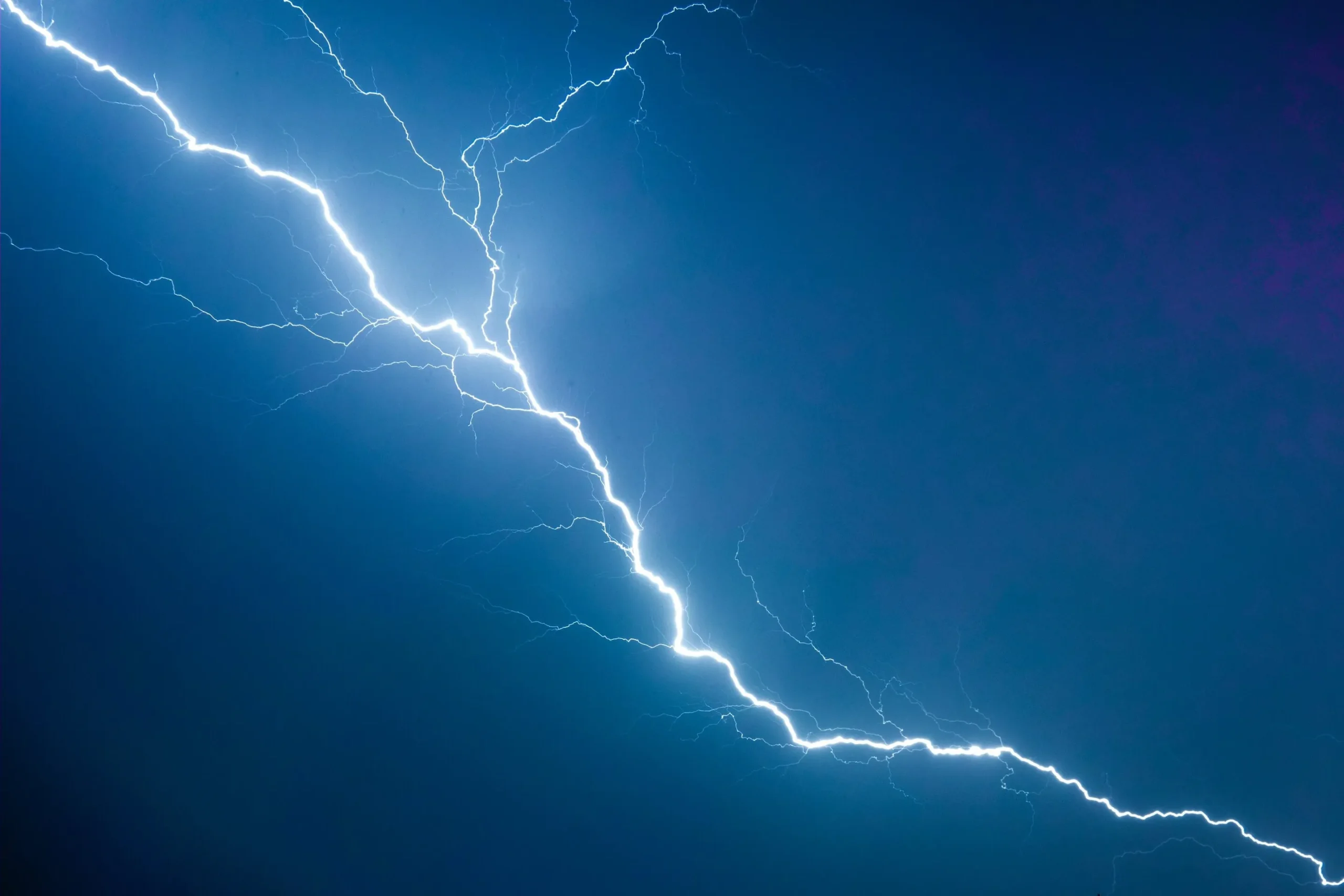Science Behind Lightning: Complete Guide to Thunderstorm Electricity
During monsoon season, powerful thunderstorms create spectacular lightning displays across the sky. These brilliant flashes represent massive electrical discharges that demonstrate nature’s incredible power and complex atmospheric physics.
Lightning from thunderstorms begins in a strong electric field between opposite charges within the storm cloud. Understanding this phenomenon requires examining how electric charges build up in storm clouds.
Storm Cloud Electric Factory
Cumulonimbus clouds, sometimes called thunderheads, can lead to hail and lightning formation through interaction of water vapor, ice crystals, snow and graupel.
Like many clouds, the cumulonimbus develops when warm air rises from the surface of the earth. As the warm air rises, it cools, and water vapor condenses into minute cloud droplets.
These towering storm clouds become natural electrical generators through constant particle collisions.
Building Electric Charges
Lightning begins as static charges in a rain cloud. Winds inside the cloud are very turbulent. Water droplets in the bottom part of the cloud are caught in the updrafts and lifted to great heights where the much colder atmosphere freezes them.
Charge separation occurs through this process:
Particle Collision Process
- Water droplets, ice particles and snow crystals collide constantly
- Lighter ice crystals gain positive charge and rise to cloud top
- Heavier water droplets gain negative charge and sink to cloud bottom
- Turbulent winds intensify these collisions
Electric Field Formation Lightning is the result of electrical charge accumulation in cumulonimbus clouds, caused by charge separation and electric field formation. Positive charges accumulate at the cloud top while negative charges build up at the bottom.
Lightning Strike Process
Lightning can stay completely within the cloud (intra-cloud lightning) when the charge regions are similar strength or can reach the ground (cloud-to-ground lightning) when one charge region dominates.
Leader Stroke Formation Electric field strength builds until it overcomes air resistance. An invisible “leader stroke” creates a zigzag pathway from cloud to ground at speeds of 100-300 kilometers per second.
Return Stroke Power When the leader stroke reaches the ground, a powerful return stroke races back up the same path at speeds reaching 100,000 kilometers per second – one-third the speed of light.
Massive Voltage Single lightning bolts can contain up to one billion volts of electricity, making them incredibly dangerous natural phenomena.
Thunder Creation Science
The nearly instantaneous heating during the return stroke causes the air to expand explosively, producing a powerful shock wave which is heard as thunder.
Lightning channels heat the air to temperatures exceeding 30,000°C – five times hotter than the sun’s surface. This extreme heating causes rapid air expansion that creates thunder’s characteristic rumbling sound.
Lightning Strike Patterns
When the precursor from the cloud meets a precursor rising from the surface, the neutralization of the thunderstorm electrical charge towards the ground causes a cloud-to-ground lightning.
Lightning preferentially strikes:
- Tall buildings and structures
- Open fields and elevated areas
- Objects with higher electrical conductivity
- Points where positive ground charges concentrate
Thunderstorm Development Stages
All thunderstorms go through stages of growth, development, electrification and dissipation. Thunderstorms often begin to develop early in the day when the sun heats the air near the ground and pockets of warmer air start to rise in the atmosphere.
The final stage of development occurs as the top of the cloud becomes anvil-shaped, indicating a mature thunderstorm capable of producing powerful lightning.
Lightning represents one of nature’s most impressive displays of electrical power. Thunderstorms develop when deep cells of moist convection become organized and merge, and then produce precipitation and ultimately lightning and thunder. These complex atmospheric processes demonstrate the incredible forces at work in our planet’s weather systems.







